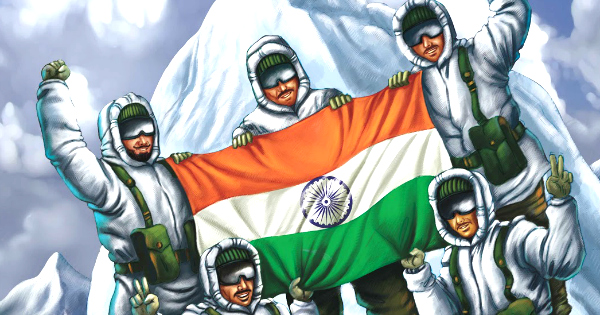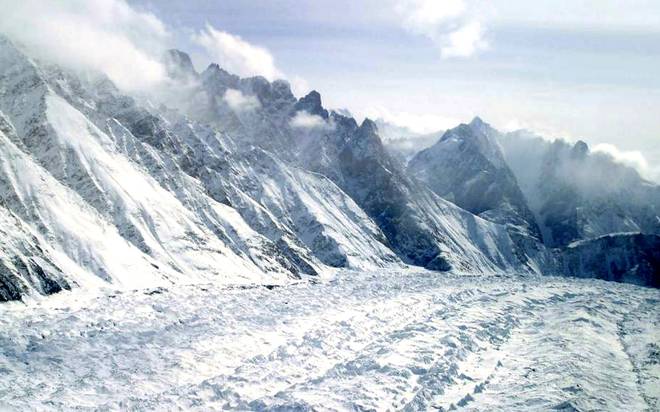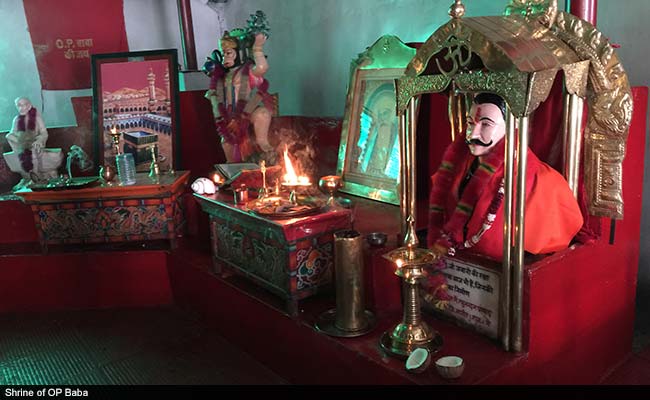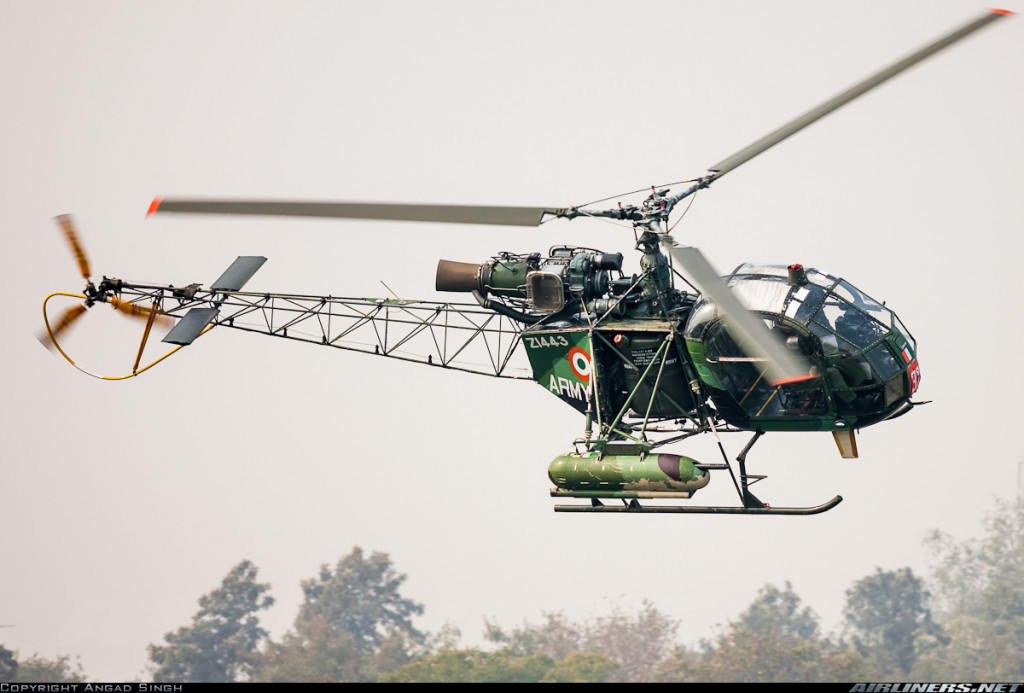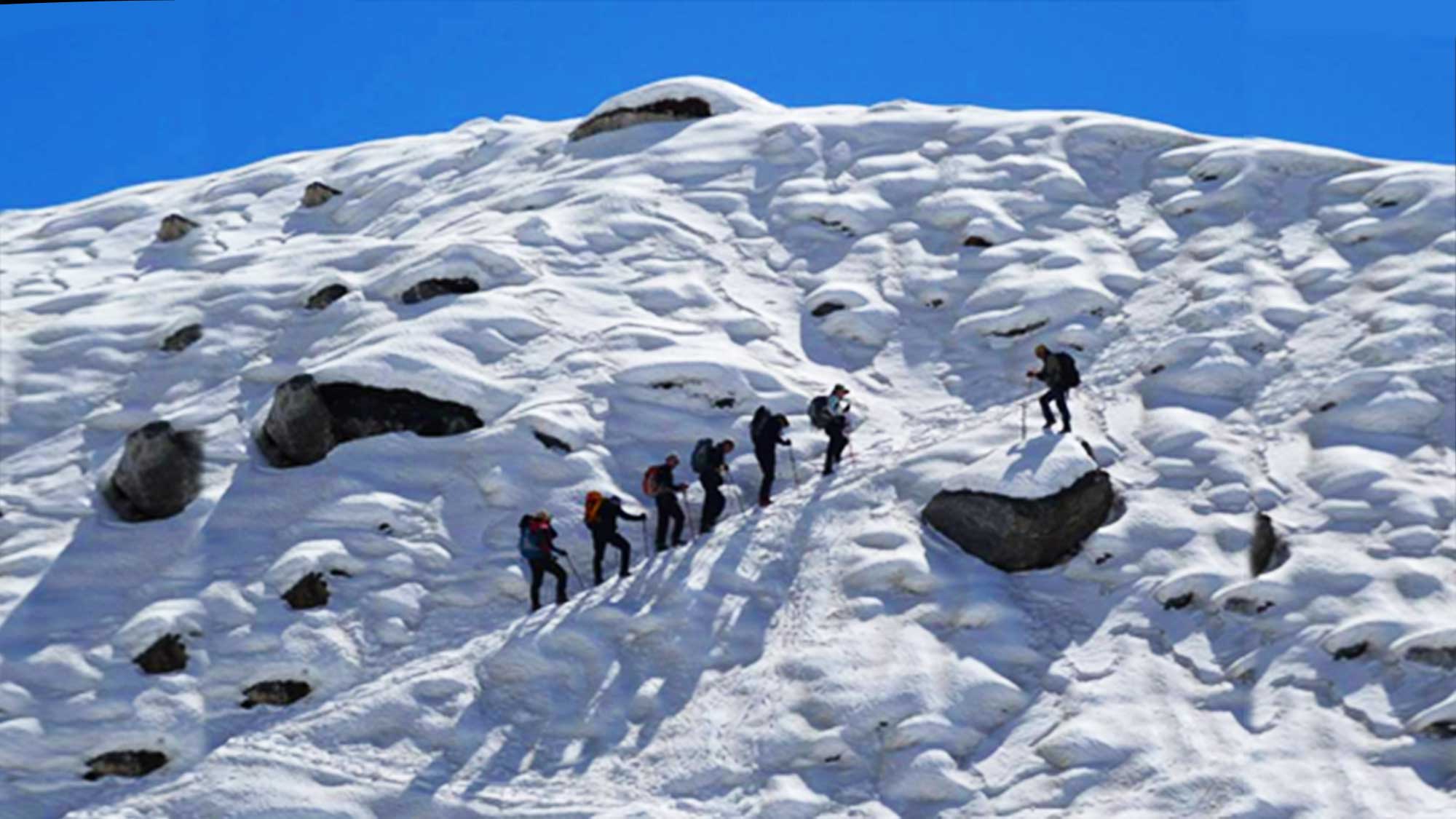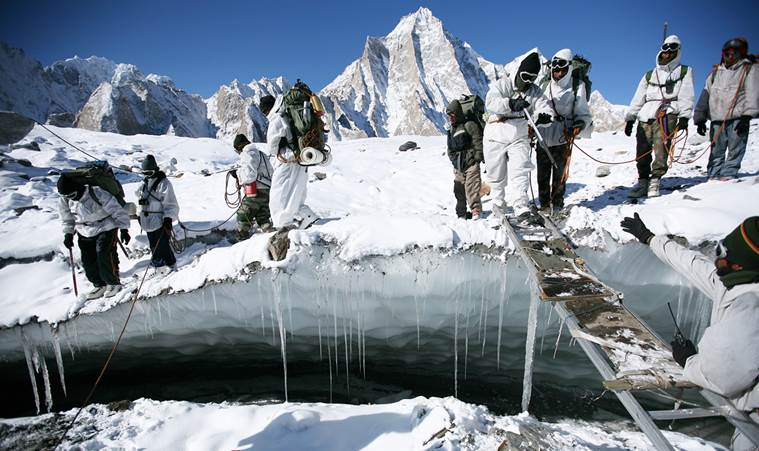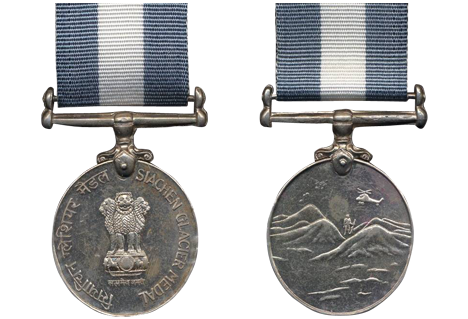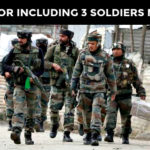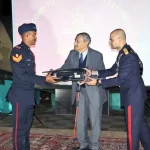The Siachen glacier at 22,000 feet with 70 kilometres of inhospitable terrain & treacherous weather is the worlds highest and most extreme battlefield! It is located in the eastern Karakoram range in the Himalayas.
The Indian army on 13 April 1984, seized full control of the Siachen glacier in northern Kashmir, in a hair-raising operation, codenamed operation Meghdoot (meaning cloud messenger), the operation was spearheaded because of the auspicious luck of having crucial intelligence at the right time about a Pakistani advance prompting the Indian army to take preemptive measures, giving us the initiative and tactical advantage over the Pakistani operation.
More than three decades have passed since then and both our countries are still at a stand-off regarding control over the region, with our soldiers maintaining a year-long presence (on a three-month rotational basis) on such barren & hellishly inhospitable land. What made a race amongst mountaineering expeditions turn into a conflict that has been going for 30 years without end? What is this conflict about?
As with many long-running territorial conflicts, the Siachen conflict too started with an un-demarcated border,
with both countries having different geographical interpretations.
The glacier is located outside the Polo region, with the Saltoro ridge to its west and Indira Col India’ss northernmost point) due north, beyond & to the west lies Pakistan Occupied Kashmir (POK), to the east of Siachen is the Karakoram pass.
The 1972 Shimla agreement after the Indo-Pak war of 1971, led to the creation of the LOC defining the geographical territory of both countries, however despite this the border issues were not settled as the LOC’s demarcation was up to NJ9842, with India’s interpretation regarding the issue being that the LOC runs to the north from the grid point NJ9842 along the Saltoro ridge to Indira Col to the east to the Karakoram pass till the border with China.
Pakistan’s interpretation of the issue is that the LOC travels in a straight line, east from the grid point NJ9842 in a straight line to the Karakoram pass on the LOAC (line of actual control) with China.
Leading to conflict due to the entirely different interpretation of the territory.
The Indian army is posted on the Saltoro ridge, while Pakistani posts are 3000 feet below around 100 Indian posts, controlling positions west of Saltoro ridge.
Both countries reached a cease-fire agreement in 2003, and both sides have suffered massive casualties due to the unforgiving wheater.
Now that we have a basic idea of what the conflict is about, let us know what the strategic importance of the Siachen glacier to India that we have troops all year round there.
Siachen holds many spheres of geopolitical importance in Kashmir, a particular piece of geography being in the Karakoram pass, which is between the POK (Pakistan occupied Kashmir) region and Aksai Chin (Chinese occupied region of Kashmir) region of Kashmir.
It the only barrier preventing the convergence of Pakistani and Chinese forces in Kashmir.
If unfortunately the Pakistani and Chinese forces were allowed to converge up at Siachen, the Indian’s national security and sovereignty over the entire northern frontier would be massively undermined and under immense threat, it would create a very powerful military alliance of India’s two biggest military rivals putting India at a crippling disadvantage.
The monumental heights of Siachen give the Indian Army the advantage of keeping a close eye monitoring the activities of the enemy in case of a conflict.
making it vital for India’s interests, even if it means spending 5 crores every day & approx to 2million$ (USD) month.
with the importance of Siachen into context we will look at so hair-raising facts about operations and life on the Siachen glacier
Operation Meghdoot:
(Pretext)
In the 1970s and early 1980s, The Govt of Pakistan permitted several mountaineering expeditions to the Siachen region, it was beleived to be an attempt to legitimize their claim there, oftentimes liaison officers accompanied the teams, So In 1978, the Indian Army too allowed mountaineering expeditions to the glacier, most notably the one launched by Colonel Narinder Kumar, who was a renowned mountaineer, to survey the Siachen glacier, the mission due to its nature was ‘classified’ throught the expedition Colonol Narinder and his team (soldier slected from ladakh scouts) were taunted by a pakistani helicopter throwing coloured smoke signalling their awarness of their presence, undeterred the colonol and his team summited the peaks of Indira Col (18900ft) and Sia Kangri (24,370ft), the expedition team returned with crucial information and insight about the terrain.
Contention over the glacier was aggravated by these expeditions, through both sides asserting their claims.
The Indian Army received intelligence reports that the Pakistani army ordered a large amount of arctic gear and mountaineering equipment unbeknownst to them it was the same London supplier who supplied arctic gear to the Indian army! This got the army to believe that Pakistan is indefinitely preparing for a high altitude Pakistani military operation, in response to the Pakistani operation the Indian army launched a counter-operation, soldiers had been deployed troops from Northern Ladakh region including some paramilitary forces were also deployed to the glacier area. Most of the troops had been acclimatized to the extremities of the glacier through a training expedition to Antartica in 82.
Pakistani military’s top brass decided to stake their claim through troop deployments to the Siachen glacier. However, after studying the Indian Army’s mountaineering expeditions, they were afraid of India’s capability to capture key ridges and passes near the glacier, deciding to deploy their troops first.
Having received the intelligence inputs about planned Pakistani action in the area and their order of large-scale arctic equipment, India decided to prevent Pakistan from laying its claim to the glacier and eventually stop their future expeditions to the glacier, launching the operation,
which was codenamed Operation Meghdoot.
Operations Meghdoot aimed to airdrop troops into Siachen, with the offensive beginning on 13th April 1984 it only took the Indian army weeks to seize control of the entire Siachen glacier.
after this war followed,
- Operation Rajiv
India captured the area during Operation Meghdoot however eventually, Pakistan launched an offensive in the area, gaining control of the highest peak in the area, which the Pakistanis named the “Quaid Post” in honour of their leader Mohammad Ali Jinnah.
The Quaid Post was manned by soldiers of the Shaheen Company (3rd commando battalion), a part of Pakistan’s Special Service Group (SSG) their elite commando unit (the Pakistani equivalent to our PARA (SF)).
India despite three daring attempts led by Major Varinder Singh, Harnam Singh, Sansar Chand was unable to capture the post.
Capturing that post was imperative to Indian success as it gave away a clear view of Indian troop movement in the Saltoro-Siachen area, so on June 26th, 1987 the Indian army launched a surprise offensive lead by Naib Subedar Bana Singh, the team started the daredevil assault by climbing a 1500 foot ice wall, approaching the post from a completely unexpected direction catching the enemy off guard
Bana Singh’s team reached the top of the peak and found that there was only one Pakistani bunker. Approaching the bunker from behind, they realized that their rifles were jammed so Naib Subedar Bana Singh then lobbed a frag grenade inside the bunker before closing the door, killing the hostiles inside. The two sides also got involved in a hand-to-hand combat with bayonets, dispatching some of the Pakistani soldiers outside the bunker, while a few Pakistani soldiers jumped off the peak, the bodies of six enemy soldiers were later found.
Naib Subedar Bana Singh was awarded the Param Veer Chakra (India’s highest award for gallantry) for his daring actions in capturing the post, furthermore, the Quaid post was renamed the ‘Bana post’ in the honour of Naib Subedar Bana Singh.
- OP Baba Shrine:
The OP baba shrine in the Siachen glacier was made in the honour of Om Prakash who was an artillery soldier was sent on a patrol on Malaun Post in Bila Complex in Northern Glacier, where he single-handedly beat back the enemy but never returned back and no one saw him or his body, however, troops were forewarned in their dreams about impending dangers on the Glacier, after which spiritual belief in OP Baba increased and temples were built in his name.
there are reports of missions are regularly given to him before and after. OP Baba not only protects the personnel on the Glacier from the enemy but also from the hostile nature and terrain. Troops talk about getting dreams whenever a warning is to be issued from the Baba.
Troops give up tobacco, alcohol and non-vegetarian food during their three-month tenure on the glacier furthermore soldiers and officers of all ranks take their blessing from OP Baba before heading out for operations and have faith that OP Baba will protect them.
longest Running Air Supply Mission:
The Army Aviation Corps (AAC) in Siachen runs the longest running air supply mission in the world which must carry on all year round, helicopter pilots only have around 200 clear flying days with choppers only being able to operate from first light to mid-morning.
The ALH-Druv MK-3 is the only aircraft with capabilities of landing in the farthest operational posts, it is equipped with an advanced Shakti engine and boasts a load capacity of 5,500 kg and is operational with a carbon fibre body reducing its overall weight.
The pilots deliver everything from kerosene stocks to ration supplies to the soldiers in remote outposts, air dropping them at designated coordinates, ready for collection.
(AAC) Take Their Birds Beyond Optimal Operational Capacity:
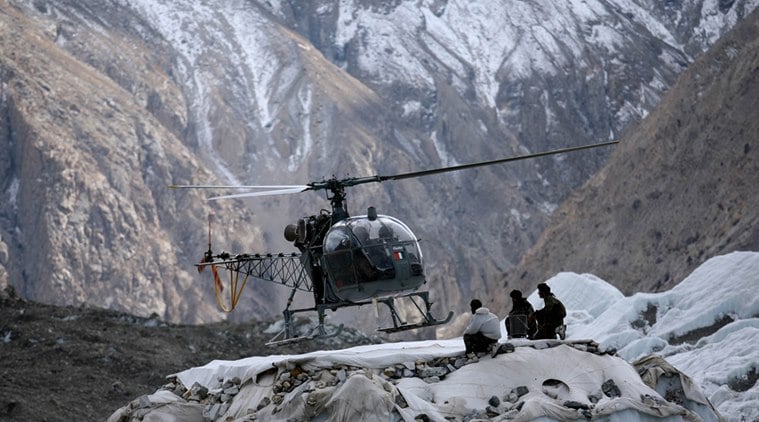
The army aviation corps in addition to supply operations do the crucial job of medical evacuations this requires the army aviators to push their aircrafts to the brink of their operational manoeuvrability day after day, lives to depend on their expertise of navigating through such hostile weather, making the life of the rescuer just as much danger.
the AAC uses a specially modified HAL-Cheetah for its high altitude supply and rescue operations, the specialised upgrades allow it to carry double its designated load capacity.
at these unforgiving altitudes, aviators are required to face drastic changes in wind pattern, speed and precipitation, they also require supplementary oxygen and must fly at a stable pace so that the patient on board does not face any further complications.
Acclimatisation:
Soldiers who volunteer to serve in the Siachen glacier undergo a highly specialised training regimen to be acclimatised and be effectively operational during their tenure there.
Soldiers undergo their second stage of acclimatisation at the Siachen base camp which is at a height of 12000 feet, this stage is essential in order for soldiers to be deployed at forwarding posts, they undergo this training with all the equipment and kit they will require during their operations at Siachen,
The acclimatisation process begins with gradual exposure, eventually moving to full-fledged morning runs in full battle gear, the running is essential for a soldier to survive in Siachen since at such high altitudes the human heart beats at an accelerated pace so a daily run helps in increasing the soldiers lungs capacity to sparse more oxygen, and this increased sparsing of oxygen is the difference between survival and death! to further put this into perspective it is important to know that at altitudes of around 8000 feet the human body suffers from acute mountain sickness causing headache, nausea, shortness of breath and inability to exercise, at 12000 feet where the second phase of acclimatisation starts (Siachen base camp), the human body experiances shortness of breath, insomnia etc, at 17000 feet (Bilafond la) the conditon may worsen, body temperatures drop fatally low and the lungs may fill up with fluid, at the 20,000 feet and above the human body may most likely experiance severe acute moutain sickmness, High Altitude Cerberal Dedema (HACO), High Altitude Pulmenory Dedema (HAPO), strokes and heart attacks and death are common scenarios soldiers may face, early symptoms are memory loss, loss of motor functions etc,
these are the conditions the Siachen soldier faces.
- Siachin battle school:
The Siachen battle school at 12000 feet is the worlds highest permanent military training school, soldiers face learn about the unpredictable terrain they will face there, they learn how to use crampons for the first time, offensive operations, climbing ice walls, survival and other battle drills are practised here.
Additionally, the elite units of the Indian army train here rigorously honing their skills in high altitude special operations, operations behind enemy lines high altitude rescue among other specialised skills.
Elite sniper teams train here in recon and various other tradecraft, special forces soldiers can operate in such environments for up to 72 hours without food, communications, sleep or additional supplies, training them to be completely self-reliant during.
- Psychological & physical cost of serving in Siachen:
Psychological trauma is prevalent on the glacier, soldiers suffer from immense stress, mental breakdowns, anxiety, they are prone to auditory and visual hallucinations, soldiers often start to believe they will never make it home, loss of rational thought and the will to live is common in Siachen.
Physical hazards include damage to the lungs oftentimes filling up with fluids, nausea, epilepsy, heart palpitations, strokes, touching any metal surface, the trigger of the rifle, for example, will immediately cause frostbite which will immediately cause gangrene if not amputated then and there, there have been grotesque cases of a soldiers nose falling after sneezing, ears ripping open after removing the helmet, foot remaining inside the boot after removing boots, these are the extremities of serving in a place which was deemed inhospitable to humans.
So if the Siachen glacier is such a demonic, extreme and inhospitable place and there is nothing worth living there why do our soldiers serve there despite the fact that they are not ordered to do so?
The answer to that question is the grey and white ribbon.
- The Siachen Medal
The Indian army does not order its soldiers to serve in the Siachen glacier, the soldiers are volunteers, units are nominated on a rotational basis and the troops volunteer with an eagerness to get that prestigious Siachen posting, that eagerness to rather die than not serve at Siachen comes from the coveted Siachen medal, that grey and white ribbon on the chest is every soldier’s dream and a chance to achieve it is an intoxication beyond any explanation.
A Siachen medal pinned to a soldiers chest speaks magnitudes of what the soldier is capable of and what he/she has experienced, what he/she has endured.
So any hazard to life and limb is minuscule beside the gravity of that medal and that is why they serve.
Siachen is a conflict has been going on for a long time and the end seems distant, it shall remain under the constant the vigil of our brave warriors, so until then…
“Quartered in snow, silent to remain. When the bugle calls, they shall rise and march again.”

